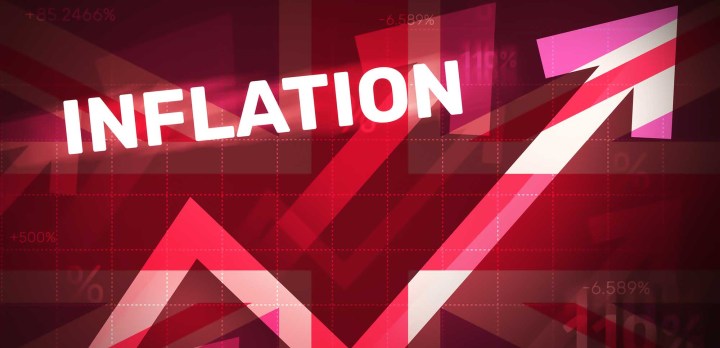BUSINESS REFLECTION
After the Bell: The inflation figure and other bodily mistakes

Inflation — there you have it: something you don’t want, but it somehow manages to insinuate itself in your life without permission.
As you get older, I have discovered, some parts of your body seem to just inflate, all on their own, without any assistance. It has nothing to do with you. Some people get thinner as they get older — lucky them. But for most people of the male specification, getting old means coming to terms with inflation of the midriff and some sagging, perhaps like life in general as you get older.
Personally, I deal with this by carefully avoiding looking at myself in the mirror. But every now and then I have the pleasure of staying in a hotel, and hotels around the world have a singular characteristic: small bathrooms. Hotels try to compensate for the premium on space by placing large mirrors all over the bathroom.
Then what happens is that you wake up, you are unsure where the light switch is, you push the buttons at random, and you suddenly find yourself — as so many bad dreams go — on stage at the Vienna State Opera with spotlights pointed at you from every direction.
I recently had this pleasure and as I was blinking myself awake, I was momentarily struck by the thought that some grotesque, overweight Gollum had broken into the hotel room from another bad dream and interposed himself between me and the now brightly lit mirror. Then it occurred to me that the cartoon sketch in front of me was in fact, sadly, moi.
Inflation — there you have it: something you don’t want, but it somehow manages to insinuate itself in your life without permission. It strikes me that there are other similarities between inflation of the economic kind and bodily inflation: there is no way to fix both other than by going on a diet, which of course nobody wants to do.
The difference between inflation of the bodily type and the economic type is that modern economies have wisely outsourced the decision of how and how long to diet to an external authority. And that may explain why bodily inflation doesn’t seem to fix itself, but economic inflation generally does.
Since the economic and business news of the past year or so has been dominated by inflation, it seems worth recapping what inflation actually is, and therein lies a pretty tale, because if we are being honest here, nobody really knows. Well, economists know, of course, what it is, as does the public in its own way. But the causes of inflation beyond some obvious push and pull factors, are mysterious, despite decades of study.
What’s obvious is that inflation occurs when prices rise because production costs, such as raw materials and wages, increase. Or it occurs when consumer demand for a product or service increases and there is too much cash chasing too few goods. The textbook causes are all well and good, but to me at least, they seem more descriptive than explanatory. In egregious circumstances (hello, Zimbabwe), the causes are obvious. But in the normal course of economic events, only sometimes, and less so.
It’s a bit like business cycles; we know they occur, we have theories about them and so on. But all those theories have not managed to enable policymakers to render the business cycle obsolete. So, do we actually understand the business cycle? You could put it this way: the continued existence of inflation is a testament to some fundamentally obscure aspects of its nature.
Consider just one feature of this subject: how do you measure inflation? It seems so simple: you collect a basket of goods and price them. Then you go back later, collect the same basket of goods, and price them again. The difference between the two is inflation.
Great! But, how do you choose what items to put in your basket? And how do you weight each of the items in the basket? Now it starts getting tricky. You try to weight the basket relative to the average use of goods in society. What you are looking for is the inflation rate felt by the average citizen. But who is that: the average, the mean, the median? And what if your society is changing, as it always is? And even if society doesn’t change, usage does. Only 20 years ago, nobody owned a smartphone; now one in every three South Africans has one. From a conceptually simple basket, we are now moving quickly towards an art form. And that, in a sense, is what it is.
For example, I recently looked again at SA’s inflation basket. Food makes up 17% of the basket, which makes sense to me; it’s a major expenditure item for South Africans. In the US basket, it’s a bit less at 14%. That too is understandable: the more developed the country, the more items outside of food become important parts of consumption. But other things seem a bit odd: beer has a 2% weighting in SA; that’s more than the 1.57% weighting for primary and secondary education. It does kinda make sense; there is lots of beer drinking going on in SA, but it is jolting nevertheless.
The big problem, it seems to me, is the service industry generally. Societies around the world are quickly becoming dominated by the service industry. But services outside of healthcare and education in the baskets of both the US and SA account for only about 5% of the total. For the kind of economies we are becoming, that seems like an undercount.
Another problem with the service industry is that it’s “sticky” from an inflation standpoint, because, as one economist explained to me, “people”. People get mighty irritated if their salaries go down, so in general, wages tend to be less volatile than manufactured goods. Hence, over the longer term, services inflation has been on a strong upward trend.
I’m not necessarily castigating how inflation is measured holus-bolus: it’s just worth remembering that when we think about inflation how difficult it is to measure. And that is just one aspect of it. So, it’s worth being at least considerate of the SA Reserve Bank’s tendency to overshoot in trying to control inflation. It’s often said that we all have our own private inflation figure, because our consumption patterns are all different.
But, as I mentioned above, figures are not something we like to talk about too much. DM

















Comments - Please login in order to comment.